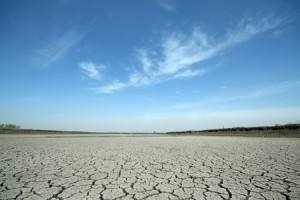Dry spell next climate-induced worry for farmers, irrigators
 CABANATUAN CITY—A prolonged dry spell next year may leave half of Nueva Ecija province’s total rice farms without irrigation, which may deal another blow to the country’s rice sufficiency drive, according to a report from the National Irrigation Administration (NIA).
CABANATUAN CITY—A prolonged dry spell next year may leave half of Nueva Ecija province’s total rice farms without irrigation, which may deal another blow to the country’s rice sufficiency drive, according to a report from the National Irrigation Administration (NIA).
The report said the NIA Upper Pampanga River Integrated Irrigation Systems’ (UPRIIS) regular irrigation component might serve only half (57,203 hectares) of Nueva Ecija’s 114,406 ha of rice land under a worst-case scenario when Pantabangan Dam’s reservoir level drops to 197 meters above sea level (masl).
This water elevation mark is 15.15 masl below the facility’s operable level of 212.15 masl.
On Thursday, the dam’s elevation was posted at 184.54 masl.
In a scenario where the NIA can serve 86 percent of the province’s irrigable rice fields, the Pantabangan water level should be at 207 masl, which may be likely from rains dumped by recent Typhoons “Glenda,” “Henry,” “Inday” and “Jose” and by future rains, said Josephine Salazar, NIA-UPRIIS operations manager.
“Things are becoming normal,” she said, but the El Niño phenomenon remains a threat once it strikes the country from September to April 2015 as forecast by the government weather bureau.
According to the Philippine Atmospheric, Geophysical and Astronomical Services Administration, El Niño is characterized by a warming of sea surface waters that takes place every three to seven years and is mostly associated with droughts and other disturbances in many regions of the world.
The worst-case scenario will leave 145 farming villages in 25 towns and three cities of Nueva Ecija, as well as sections of Pampanga, Tarlac and Bulacan provinces, with no irrigation water for the next cropping season in 2015.
In the Bicol region, agriculture officials said the focus was now on measures to soften the blow on farms that were still reeling from the effects of Typhoon Glenda.
Special attention is needed in Camarines Sur province, according to Abelardo Bragas, head of the Department of Agriculture’s (DA) Bicol field office.
Bragas said the province has half of the total area (80,000 out of 160,000 hectares) of farms in the region.
But the solutions being seen are no different from those that have been tried in the past. According to Bragas, the DA may distribute shallow-tube wells. Reports from Armand Galang, Inquirer Central Luzon, and Juan Escandor Jr., Inquirer Southern Luzon














